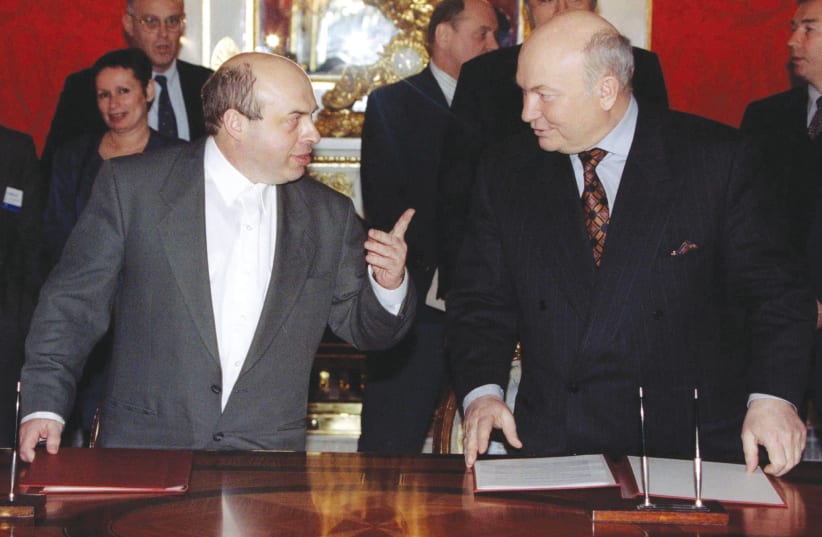Goldman, who founded 27 Hillels across the former Soviet Union, has written an exciting history of the organization’s beginnings in the FSU from 1993 to the beginning of the new century and how the Hillels throughout the vast country were able to reach out to post-secondary students, enable them to learn about their Jewishness and develop a relationship not only to Judaism but also to the nascent reemerging Jewish communities throughout the FSU.
Goldman provides a brief historical context so the reader can understand the challenges that Hillel faced in achieving its mission to serve both FSU students and eventually Jewish communities. He then describes the process by which it introduced a Jewish student organization to the student population in the three major cities of Moscow, St. Petersburg and Kyiv. As he describes Hillel’s approach, Goldman’s warmth, personal touch and sense of humor come through in the book, and it becomes quite evident what enabled him to be successful in engaging students and recruiting indigenous future leaders.
Following the collapse of the Soviet Union, Goldman was able to form alliances with international organizations, including the Jewish Agency for Israel, the American-based religious movements that were beginning to get more engaged in the FSU, the umbrella organization of North American Jewish Federations (then called the United Jewish Communities), individual local Jewish federations and the American Jewish Joint Distribution Committee: they became a stalwart and consistent partner in many of Hillel’s ventures and initiatives. Goldman was able to pool resources to enable Hillel to establish itself in different cities and then strengthen its presence to the benefit of its own programs and the local Jewish community.
Hillel’s overarching approach was to empower local personnel and use the organization’s professional expertise and programming skills to develop indigenous leaders who would be able to have an impact on Jewish life. Its aim was “to create an organization that stresses responsibility, innovation and creativity. The ultimate goal… [was] to implement activities that… attract[ed] those students that care about their Jewish identity, along with the ones who are presently alienated and estranged from Jewish roots and heritage.” This mission guided its beginnings and was consistent through everything it did to build up the organization throughout the republics and expand its programs.
Sprinkled throughout the book are many vignettes that illustrate Hillel’s approaches undertaken in different cities to train student leaders and subsequently empower them with the knowledge and sense of self-confidence that in most cases ensured their success. To develop the first series of training workshops, Goldman built an “FSU expanded team” made up of representatives from the international organizations that Goldman recruited as partners. He particularly drew on the expertise of Hillel’s Jerusalem-based staff and JDC’s skillful and knowledgeable professional leadership. They began by creating Jewish educational materials focusing on Passover, Shabbat and Purim, and expanding into Rosh Hashanah and Yom Kippur. These workshops developed students’ leadership skills, provided them with a foundation of salient Jewish concepts and ideas, and incorporated a variety of creative approaches including drama, music, film and art.
It is exciting to read about how these student leaders, newly empowered by their training seminars, were able to implement programs both for students and for the larger local community. The students planned and led model Seders and community programs, as well as reached out to isolated elderly, bringing programs to them in their homes. Throughout the book Goldman relates very touching stories about the very meaningful impact that students had on local community members in need. Hillel’s success was reflected in the growth and strengthening of the students’ sense of Jewishness, their commitment to the Jewish people and the number of students involved in its work.
During the late 1980s and 1990s when I was working for a small Jewish foundation, I was sent to the FSU to train local community leaders who would eventually provide the infrastructure for leadership in local communities. The foundation neither had the financial or personnel resources that Goldman was able to develop in the Hillel FSU program, and it was gratifying for me to read about his wonderful successes in reaching out, attracting and developing student leaders throughout the FSU.
However, I was left with one question about the limited resources he refers to and how he was able to accomplish so much on a limited budget, which was added to by donors such as the Chais Family Foundation and the Schusterman Foundation. Goldman never mentions approaching wealthy Russian-Jewish individuals to augment the funds he was bringing from organizational and foundation sources. It seems to be they could have been (and still could be) a valuable source of financial assistance as they have been for other organizations and causes in the FSU.
I highly recommend the book: it will instill a strong sense of pride in what we as the Jewish people are able to accomplish when we are able to think creatively “out of the box” and pull together the resources of the organizations and professionals we have available to us. In particular, we are blessed with such innovative and committed leadership as Rabbi Yossie Goldman. We can only hope that his legacy in the FSU will be maintained by the continued expansion and development of efforts to rebuild Jewish life in the former Soviet Union.
The writer is a retired faculty member of Hebrew University’s MA Program in Non-Profit Management.
Let My People Grow
By Rabbi Yossie Goldman
Gefen Publishing
219 pages; $24.95
